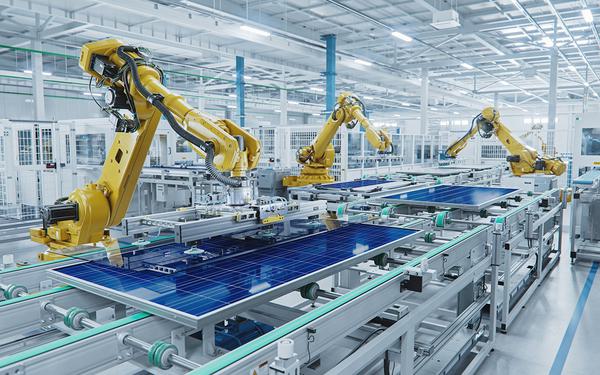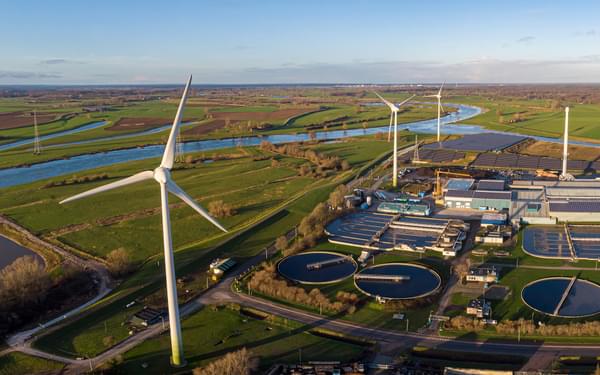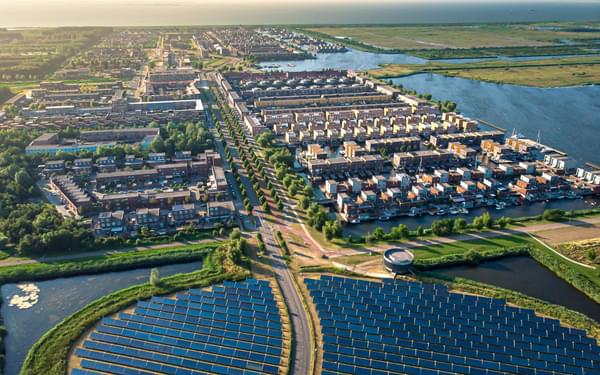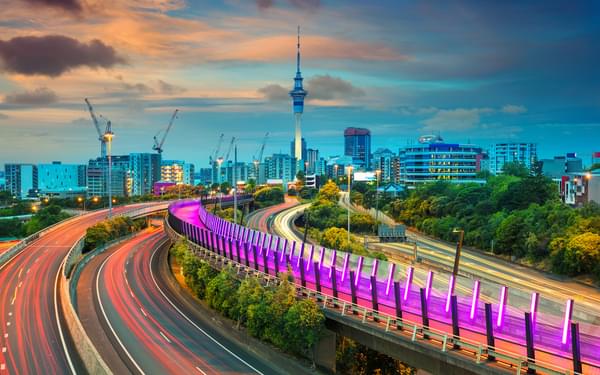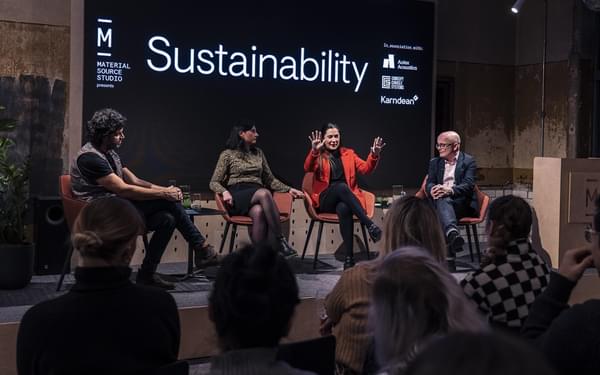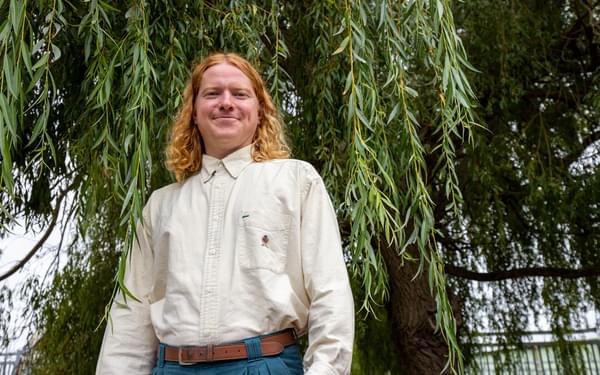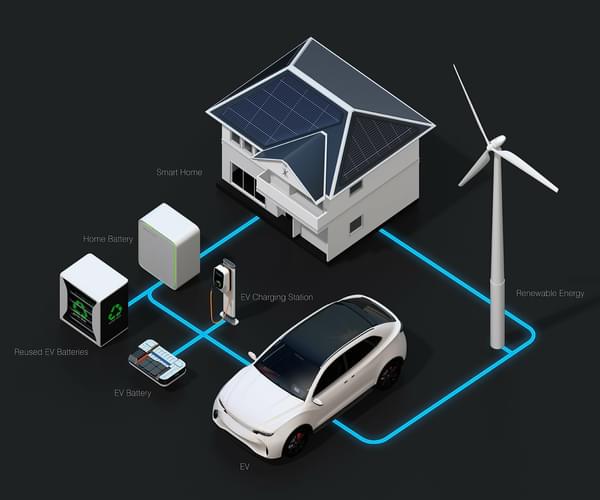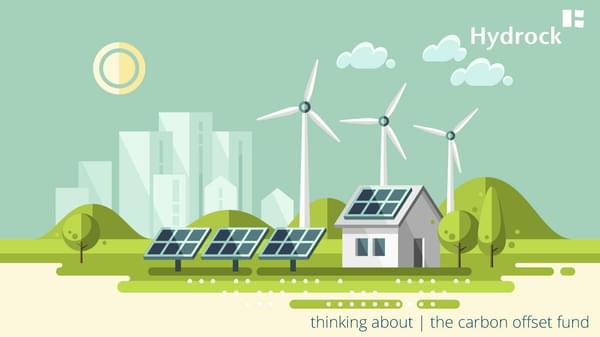
An unrecognisable energy landscape combined with regulatory uncertainty is presenting the energy and real estate world with new opportunities.
We hosted the first of our smart energy industry roundtables in Bristol in October to consider how deployment of the optimum mix of technologies could maximise the economic value of existing and future developments to achieve the holy grail: commercialising decarbonisation.
At Hydrock, the smart energy team has a unique perspective on integrating energy projects into the property market, helping clients to realise value where they’ve not seen it before.
The discussion kicked off with Chris Bowie-Hill asking Paul Barker (Energy Infrastructure Manager, Bristol City Council) how the council is giving access to lower cost energy, alleviating fuel poverty, whilst using energy to create value through a broader asset base.
The focus for Bristol City Council, Paul explained, is around what technology can do. District heat networks can be a good local solution, managed away from the National Grid and allowing decarbonised energy delivery.
Decentralisation
Bristol’s emerging municipal heat network is currently formed of 4 heat clusters predominantly serving its social housing stock, explained Paul. Heat is delivered from gas CHP engines while park and garden waste is made into woodchip which fuels biomass boilers across the city. As commercial connections come online Bristol Energy Services are decarbonising the heat network through large scale adoption of heat pump technology, including water source units served from the floating harbour. Long term mines underneath areas of Bristol could provide a residual heat source for local homes while waste heat from Avonmouth power plants could be fed back into the city centre.
“Mines underneath areas of Bristol could provide a residual heat source for local homes while waste heat from Avonmouth power plants could be fed back into the city centre.”
As consumers move away from the National Grid, resulting in loss of revenue, the Targeted Charging Review (TCR) is underway to assess how the shortfall can be made up and the network maintained. We know, commented Ross Fairley (Partner, Burges Salmon), that larger centralised transmission connected power stations for resilience will continue to be required, but with the move to local, distributed generation the revenues to pay for the modernisation and maintenance or our transmission system are dwindling. This has resulted in a review of charging and the reality is that distributed generation may not keep all the embedded benefits it once held. Until these policy and charging reviews are settled, investment into local distributed generation will be hindered.
Policy was an issue that surfaced again and again in the discussion. For Sam Willitts (Energy & Sustainability Manager, Bristol Royal Infirmary), continually shifting battery and capacity markets and the uncertainty for revenue streams means there is ambiguity in the business case to invest, pushing commercial users towards microgrid solutions. At the BRI, CHP is the answer. It supplies the hospital’s energy demand, independent of policy and subsidies. It also provides surplus generation capacity, meaning the hospital could theoretically supply the university site next door.
The National Grid is encouraging people to connect to their network, but District Network Operators flooded with applications have had to introduce cost prohibitors as developers bombard them with applications for innovative ways to connect.
Could renewables sell to local users to make up that shortfall, asked Clare Wilks (Associate, LDA Design). Yes, explained Ian Harding (Director, Enso Energy). Distributed ledgers allow you to sell energy to your neighbour, for example, but high export tariffs are currently prohibitive.
Community and ground-up adoption
Energy and electricity generation is a complex subject and lack of understanding can, and has, fast led to apathy – a key barrier to rapid, large scale adoption of alternative energy solutions. Education is key to changing consumer habits, getting people on board and embracing new technologies. It can also enable community-owned solutions, such as microgrids.
“Education is key to changing consumer habits, getting people on board and ... can also enable community-owned solutions, such as microgrids.”
A theme that quickly emerged during the discussion was the need to involve local communities. Often, the best energy solutions are dependent on local assets and community engagement. Sam Willitts believes people will be more likely to adopt renewables and low carbon technologies if their neighbours and friends are – a ‘ground up’ approach built on trust.
“…people will be more likely to adopt renewables and low carbon technologies if the approach is built on trust”
Another key education piece is around helping people understand their own energy consumption. Craig Madders (Regional Development Manager, LinkCity) believes few people know what their smart meter readings mean in real terms, limiting the opportunity for them to adapt their energy consumption habits. Whilst smart meters are slowly gaining traction, roll out has been poor, argued Ross Fairley, further contributing to consumer indifference. Chris Grainger (West of England Combined Authority) described smart meter technology being used in America that learns consumer habits, attributing energy consumption to specific appliances, which has led to a more promising impact on energy use.
Effective smart meters, alongside the rollout of time-of-use energy tariffs for the residential market, will lead to the ability to benefit from demand side reduction and load shifting, explained Henry Easterbrook (Director, Hydrock). In time, home owners will start to adapt their consumption habits to fit with peak-and-trough fluctuations in the grid, and the associated charges. We are also moving towards the adoption of batteries to store energy domestically, allowing us to avoid peak-use costs. This may be a couple of years away from becoming cost effective, but it does work at a domestic scale if occupancy timeframes are long enough.
Revenue opportunities and commercialisation
Henry Easterbook argued that whilst decarbonisation may be a big driving force for homeowners and commercial users, the primary incentivisation remains financial betterment. If distributed ledgers allow the local buying and selling of energy, then becoming a ‘prosumer’ – a producer of energy over and above your own consumption, allowing you to sell the excess - becomes attractive.
One example of this we see increasingly discussed is the use of solar PV to generate and store excess energy using battery technology. At a domestic level, this could allow homeowners to create a tradeable asset from their energy storage, charging local consumers to re-charge their electric vehicles (EVs).
“Using solar PV to generate and storing excess energy using battery technology...could allow homeowners to create a tradeable asset from their energy storage…”
The reality, explained Ross Fairley, is that the future of EVs is uncertain – at least in terms of adequate charging stations (and limited domestic capacity to provide rapid charging), and the question of EV ownership versus car clubs or, longer term, decentralised autonomous car pools, for example.
The reality, explained Ross Fairley, is that where the bulk of EV charging will take place is still uncertain. Yes, there will be home charging for those who can have it, yes there may be work charging but with the growth in EV battery capacity a network of fast charging stations will be needed. If we are looking longer term, we also need to consider how many people will actually own an EV and what the effect of connected and autonomous car pools and networks might mean.
Craig Madders was asked about decarbonisation incentives for developers. The reality, explained Craig, is that at present, it is not a significant differentiator for investors in the build to rent market, but reduced core running costs are of value. The student residential market is more mature in this arena. Typically, tenants don’t manage their own energy use, so there’s greater motivation to reduce costs. With better data in the future there may be greater interest from funders seeking to maximise value, but that is 5+ years away.
Time, and specifically, payback time, is another critical factor in finding the right energy solution for a site. The installation cost of heat pumps, for example, means it can take 4-5 years to see a return on the investment. That will disincentivise some people who question where they’ll be in that timeframe. Short term investors won’t be driven by longer term returns, but long-term investors will see pay back.
Ian Harding asked Matthew Grimwood (Partner, TLT solicitors) how often he was asked to consult on carbon related issues during real estate contract negotiations. Never, was the response. The only way this will change is either through enforced regulatory or policy change, or through the evolution of net zero and ESG making businesses feel forced to do ‘the right thing’.
Final thoughts
Wrapping up the discussion, Chris Bowie-Hill (Technical Director, Hydrock) recapped on some of the key take-aways:
- Lack of understanding around real energy consumption holds back adoption of alternative energy solutions.
- Education is key to changing habits.
- Investors are still driven by financial return but conservative with it; standardisation and policy will drive the change towards decarbonisation.
- Planning for the future: over investment in a single technology could be risky over a long period of time if it doesn’t pay back or if technology changes mean these solutions become defunct.
We are hosting further smart energy roundtables in London, Birmingham, Manchester and Southampton over the coming months. Get in touch here if you are interested in being part of the conversation.
To sign up for updates and commentary on smart energy, click here.
Many thanks to our participants:
Paul Barker, Energy Infrastructure Manager, Bristol City Council
Craig Madders, Regional Development Manager, LinkCity
Carl Lapworth, Director, Cognesis Ltd
Ross Fairley, Partner, Head of Renewable Energy, Burges Salmon
Clare Wilks, Associate, LDA Design
Stephen Baker, Managing Director, Goram Homes Ltd
Matthew Grimwood, Partner, TLT solicitors
Sam Willitts, Energy & Sustainability Manager, University Hospitals Bristol NHS Foundation Trust
Chris Grainger, SW Energy Hub Technical Manager, West of England Combined Authority
Ian Harding, Director, Enso Energy


